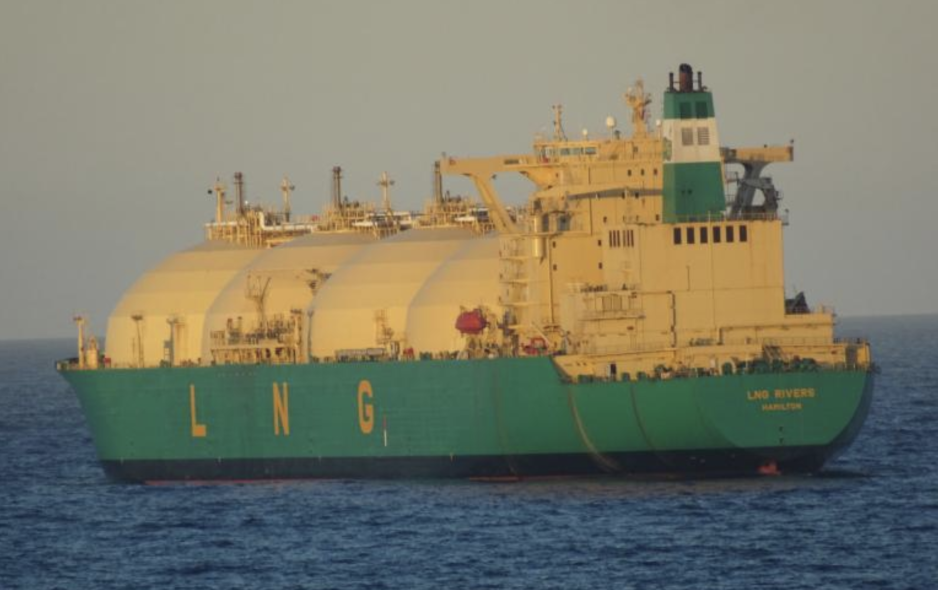Russian LNG ‘Shadow Fleet’ Operates in Norwegian Barents Sea

Asya Energy, called LNG Rivers at the time, in 2017 off the coast of Las Palmas, Spain. (Source: With permission by Alan Soutar)
Multiple LNG carriers of Russia’s emerging dark fleet continue to operate in the waters of Northern Norway spoofing their AIS transponder signal to “disappear” and load sanctioned liquefied natural gas. The vessels carry no or insufficient maritime insurance and fly black-listed flags with a poor safety record and are considered high risk.
Norway’s Arctic waters are increasingly taking part in a game of geopolitical chess between Russia and the West. Multiple LNG carriers have traveled through Norway’s waters of the Barents Sea in an effort to load sanctioned liquefied natural gas from Russia’s Arctic LNG 2 facility; seemingly without repercussions.
LNG carriers Pioneer and Asya Energy both traveled to the same coordinates just outside Norway’s Exclusive Economic Zone, illegally turned off or spoofed their AIS transponder signal, absconded to the sanctioned Arctic LNG 2 project, and then reappeared at their previous location approximately a week later.
A third vessel, Everest Energy, under the same management and ownership, is currently holding position at the same coordinates and may become the third known vessel of the shadow fleet.
Russian vessels using the "Loop Hole"
The events seemingly took place just outside Norway’s Exclusive Economic Zone in an area known as the “Loop Hole” and to the west of the boundary agreed to in the 2010 Treaty with Russia on Maritime Delimitation and Cooperation in the Barents Sea and the Arctic Ocean.
Vessel tracking services show the activity of Pioneer and Asya Energy occurring to the west of the 2010 delimitation line around 220 nautical miles from the Nordkapp.

Location of Pioneer and Asya Energy AIS spoofing relative to Norway’s maritime boundary. (Source: UN map, own work)
The disabling or spoofing of AIS signals represents a violation of International Maritime Organization’s International Convention for the Safety of Life at Sea conventions.
“Carrying and transmitting an AIS device is compulsory for all vessels over 300 UMS [register tons), as required by the IMO Solas Convention. It is forbidden to scramble or usurp the identity of an AIS transmission,” confirms Hervé Baudu, Arctic shipping expert and Chief Professor of Maritime Education at the French Maritime Academy (ENSM).
Unclear if Norway could take action
While the spoofing activity likely took place outside Norway’s Exclusive Economic Zone, the vessels subsequently traveled for extensive periods inside Norway’s coastal waters.
Norway’s Coastal Administration (Kystverket) did not respond to inquiries if Norway was aware of the activity or was planning to take any actions. Kystverket previously responded to questions about LNG carrier Pioneer but mistook it for a similarly-named but unrelated vessel Pioneer Knutsen. Follow-up questions at the time remained unanswered.
Shadow fleet vessels seldom carry Western protection and indemnity insurance and are often aging and poorly maintained, representing an increased risk to the environment in case of accidents. International shipping database Equasis does not list any information about P&I insurance providers for Pioneer, Asya Energy and Everest Energy.

Tracks of Pioneer, Asya Energy, and Everest Energy in Norway’s EEZ. (Source: Shipatlas)
All three vessels are registered in Palau, an island country in the Micronesia subregion of Oceania, black-listed under the Paris MoU signifying a poor safety record and low regulatory compliance. Ships flying black flags are considered high risk.
On the crude oil side, Russian shadow fleet tankers have been involved in more than 50 incidents including oil spills, onboard fires, and collisions.
After loading sanctioned LNG both Pioneer and Asya Energy traveled through the Norwegian EEZ for several hundred nautical miles, increasingly placing Norway's northern coastal waters at the intersection of geopolitics and maritime safety.


